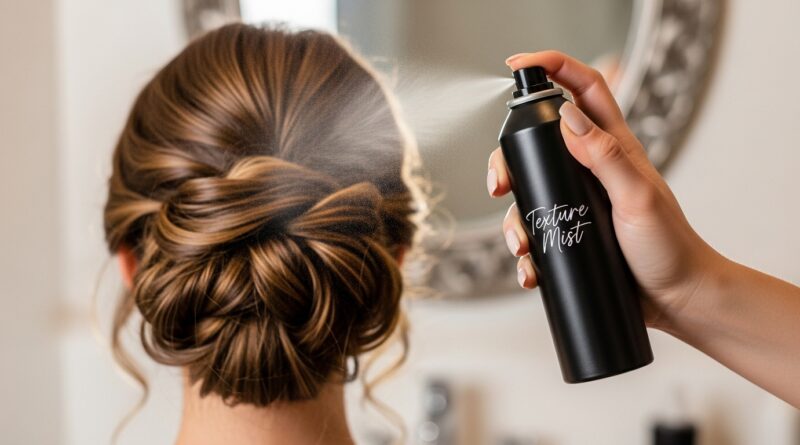The Secret to Keeping choppy updo Hair Fresh All Week
You know the feeling. You spend precious time crafting the perfect, effortlessly cool choppy updo. It’s a masterpiece of artful disarray, with tendrils framing your face and a volume that says, “I woke up like this.” It looks incredible… for about six hours. By the next morning, what was once a voluminous, textured updo has deflated into a sad, lopsided bun, with flyaways staging a mutiny and the once-defined pieces now just looking messy.
It’s a common hair heartbreak, but what if we told you it doesn’t have to be this way? What if you could create a choppy updo on a Monday and have it still look fresh and intentionally messy on a Thursday? It sounds like a fantasy, but it’s entirely within reach. The secret isn’t just in the technique of putting it up; it’s in a strategic cocktail of preparation, product, and preservation. Get ready to unlock the holy grail of low-maintenance, high-style hair.

It All Starts at the Root: The Pre-Updo Prep Work
Think of your hair like a building. A skyscraper needs a solid foundation, and your updo needs a solid base of hair to stand on. The freshness of your style days from now is directly determined by the state of your hair before you even twist the first section. The golden rule? Second or third-day hair is your best friend.
Hair that is freshly washed is often too soft and slippery, lacking the natural texture and grit that helps styles hold. Your scalp’s natural oils, which accumulate after a day or two, act as a fantastic styling agent, providing hold and reducing flyaways. If you must style on clean hair, completely rethink your washing routine. Swap out that heavy, moisturizing conditioner for a lightweight volumizing one, and always, always use a texturizing spray or mousse at the roots while your hair is still damp. This builds a foundation of grit and volume from the very beginning.
Dry shampoo is not just a refresh tool; it’s a pre-emptive styling weapon. Apply it to your roots before your hair looks oily. A light dusting on day-one hair absorbs future oil, adds immense volume, and creates that all-important texture that bobby pins and elastics can grip onto. Don’t just spray and go—let it sit for a minute, then massage it into your scalp to distribute the product and boost volume even further.
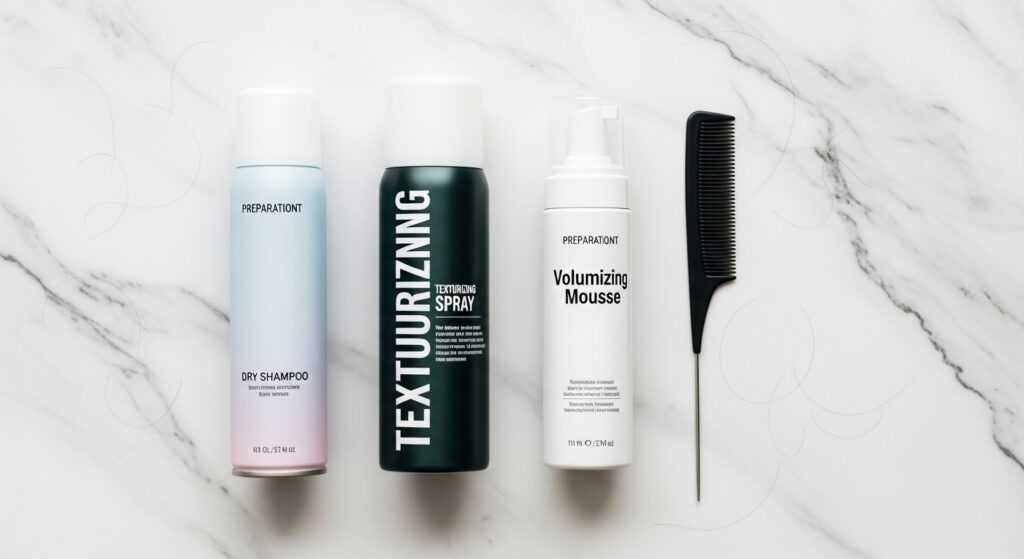
The Art of Strategic Teasing: Your Volume’s Best Kept Secret
The hallmark of a great choppy updo is volume. Without it, you have a flat, tight bun. The key to achieving that “lived-in” volume that lasts is strategic teasing, also known as backcombing. This isn’t the aggressive, hair-damaging teasing of the 1980s; this is a gentle, targeted approach.
Start by taking small, horizontal sections of hair at the crown of your head. Lightly mist the section with a flexible-hold hairspray. Then, using a fine-tooth comb, gently push the hair towards your scalp in short, downward strokes. You are not trying to create a giant rat’s nest; you are simply creating a tiny cushion of tangled hair at the base to prop up the top layer. Smooth the top layer over the teased section, and you have instant, invisible volume. This technique is especially crucial for the sections where you’ll be creating those artful “chops” and pulls—the teased underlayer will hold the shape for days.

Product Power: Choosing the Right Allies for the Battle
Using the right products is the difference between a style that survives and one that surrenders. You need a lineup that provides hold without hardness and texture without tackiness.
Texture Spray is Your MVP: This is the single most important product for a long-lasting choppy updo. A good texture spray adds grit, volume, and a flexible hold. It gives individual strands something to grip onto, preventing them from slipping out of place. Spray it liberally at the roots for lift and lightly over the lengths before you start styling.
Strong-Hold, Flexible Hairspray: Forget the helmet-head hairsprays of the past. Modern flexible-hold hairsprays lock in your style while allowing for movement. The goal is for your updo to look touchable, not shellacked. Use it in a light, misting motion from a distance to set the final style.
Dry Shampoo Paste or Pomade: For those shorter, choppy pieces around your face and nape of your neck that never seem to stay put, a matte pomade or dry shampoo paste is a game-changer. Take a tiny amount, rub it between your fingers, and twist those stray pieces. The product will give them enough weight and texture to stay exactly where you put them.
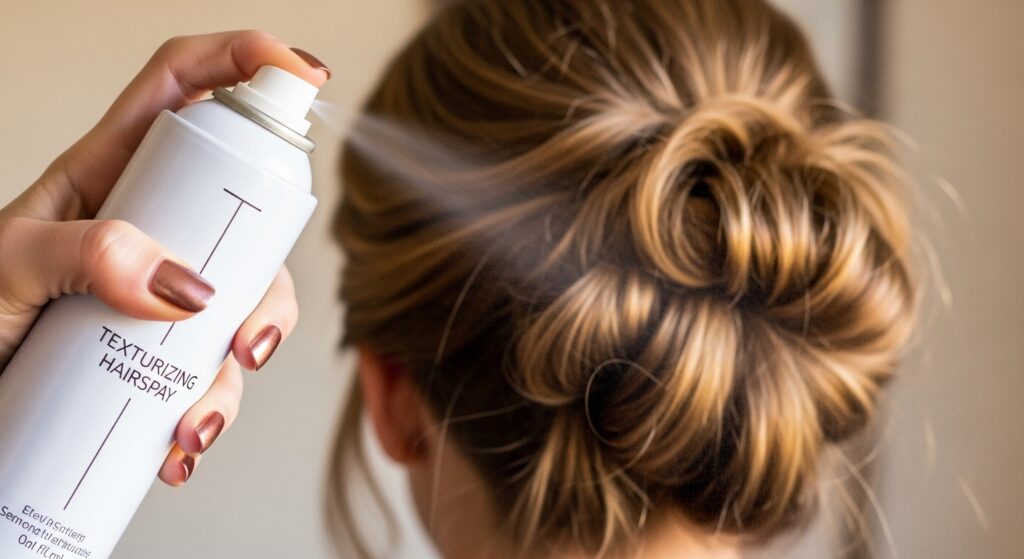
The Nightly Preservation Ritual: How to “Pause” Your Style
This is perhaps the most overlooked step. How you treat your hair while you sleep will make or break your multi-day updo. You can’t just collapse onto your pillow and hope for the best.
First, gently remove any heavy clips or elastics. You don’t need to take it all down—just release the main points of tension. Next, flip your head over and loosely gather your hair into a high, loose ponytail on the very top of your head. Secure it with a soft, spiral hair tie (the kind that doesn’t crease) or a large scrunchie. The goal is to keep the volume at the crown and prevent the style from getting smashed flat.
For the ultimate protection, consider sleeping on a silk or satin pillowcase. The smooth surface creates less friction than cotton, meaning less frizz and less disruption to your carefully crafted texture. When you wake up, simply take the ponytail down, shake out your roots with your fingers, and use a tiny bit more dry shampoo or texture spray at the roots if needed. Fluff the pieces, and you’re good to go. No restyling required.
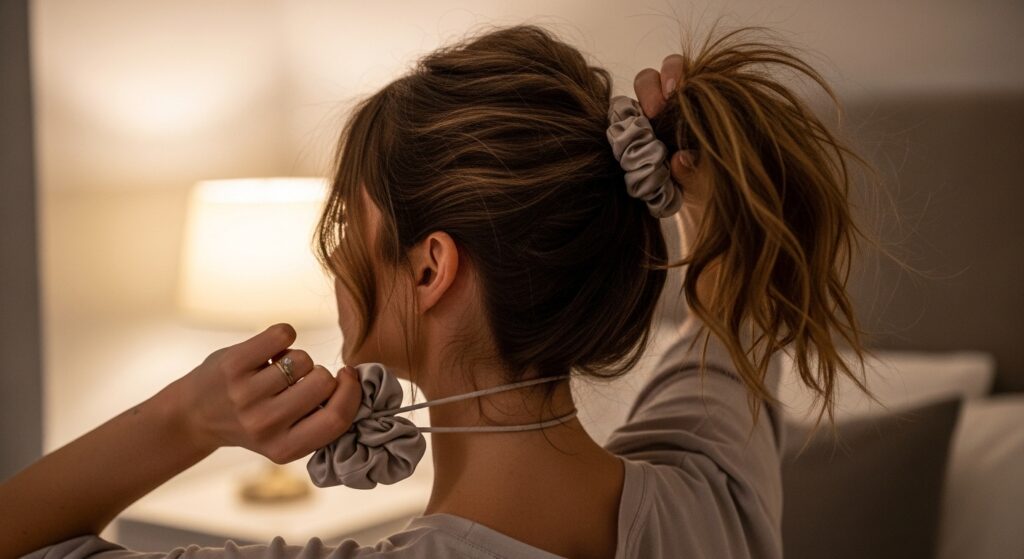
The Mid-Week Refresh: Fixes Without Starting Over
Even with the best preservation, by day three or four, your updo might need a little pick-me-up. This is not a time for panic or for dousing it in water. The key is strategic touch-ups.
If the volume has dropped, flip your head over and spritz the roots with dry shampoo. Let it sit for 30 seconds, then flip back and massage your scalp. Use your fingers to gently lift and separate the hair at the crown. If specific sections have fallen flat, use the tail of a comb to gently re-tease just that small area from underneath.
For flyaways and stray pieces, don’t smooth them down with hairspray on a brush—that will make your style look stiff and overdone. Instead, spray a small amount of hairspray directly onto your finger tips or a toothbrush and gently pat or guide the flyaways into place. This tames them without destroying the messy texture.
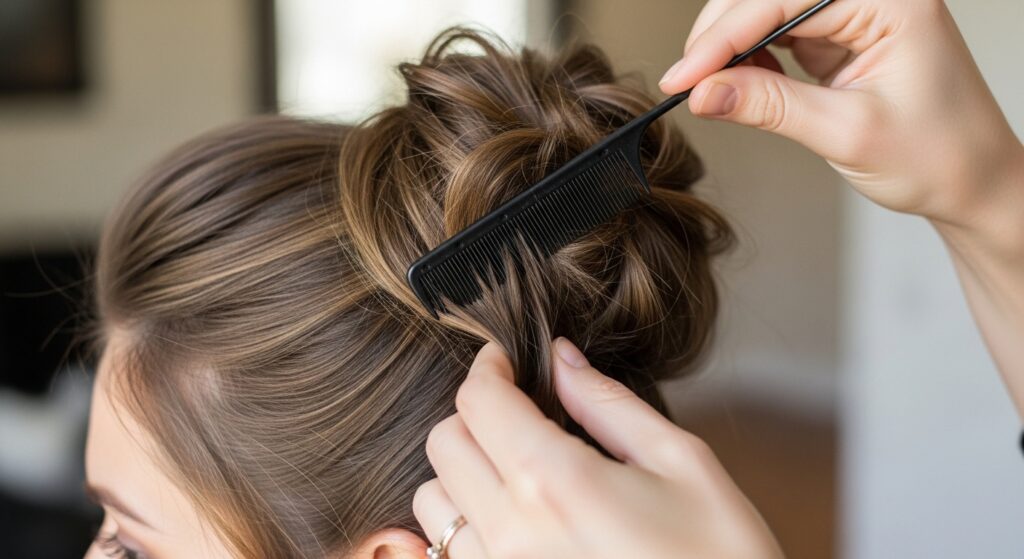
Common Pitfalls and How to Avoid Them
Let’s troubleshoot some of the most common reasons a choppy updo fails.
Pitfall #1: The Slippery Strands. This happens when hair is too clean or fine. Solution: Always start with texturizing products. A light dusting of texturizing powder at the roots can work wonders for fine hair.
Pitfall #2: The Hard, Shellacked Look. You used too much of the wrong kind of hairspray. Solution: Opt for flexible-hold formulas and apply them in a light, continuous mist from at least 10 inches away.
Pitfall #3: The Lopsided Collapse. The weight of the updo is unevenly distributed. Solution: Use multiple, smaller bobby pins in a criss-cross pattern to secure sections, rather than one or two large ones. This distributes the weight and provides a stronger hold.
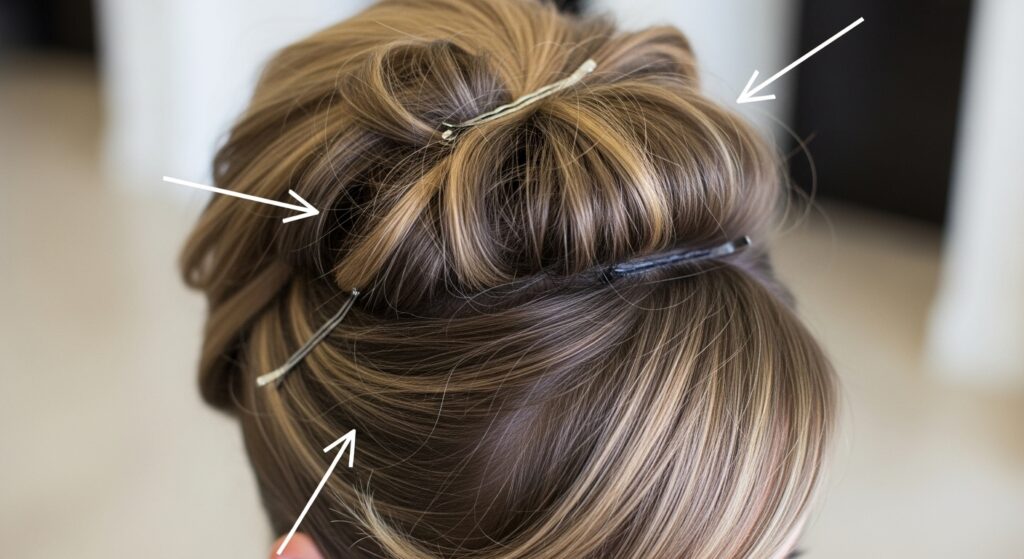
Embrace the “Messy” and Enjoy the Freedom
The true beauty of a choppy updo is its inherent imperfection. It’s meant to look a little undone, a little effortless. By following these steps, you’re not trying to create a rigid, unchanging sculpture. You are simply giving your hair the tools and structure it needs to maintain its beautiful, textured shape for days on end.
This secret isn’t about fighting your hair’s natural tendencies, but about working with them. It’s about building a foundation of texture, locking in volume with smart techniques, and preserving your hard work while you sleep. Master this routine, and you’ll unlock a new level of hair freedom. You’ll save time, extend the life of your washes, and always have a go-to style that looks like you just stepped out of a salon—even if it’s been four days.
